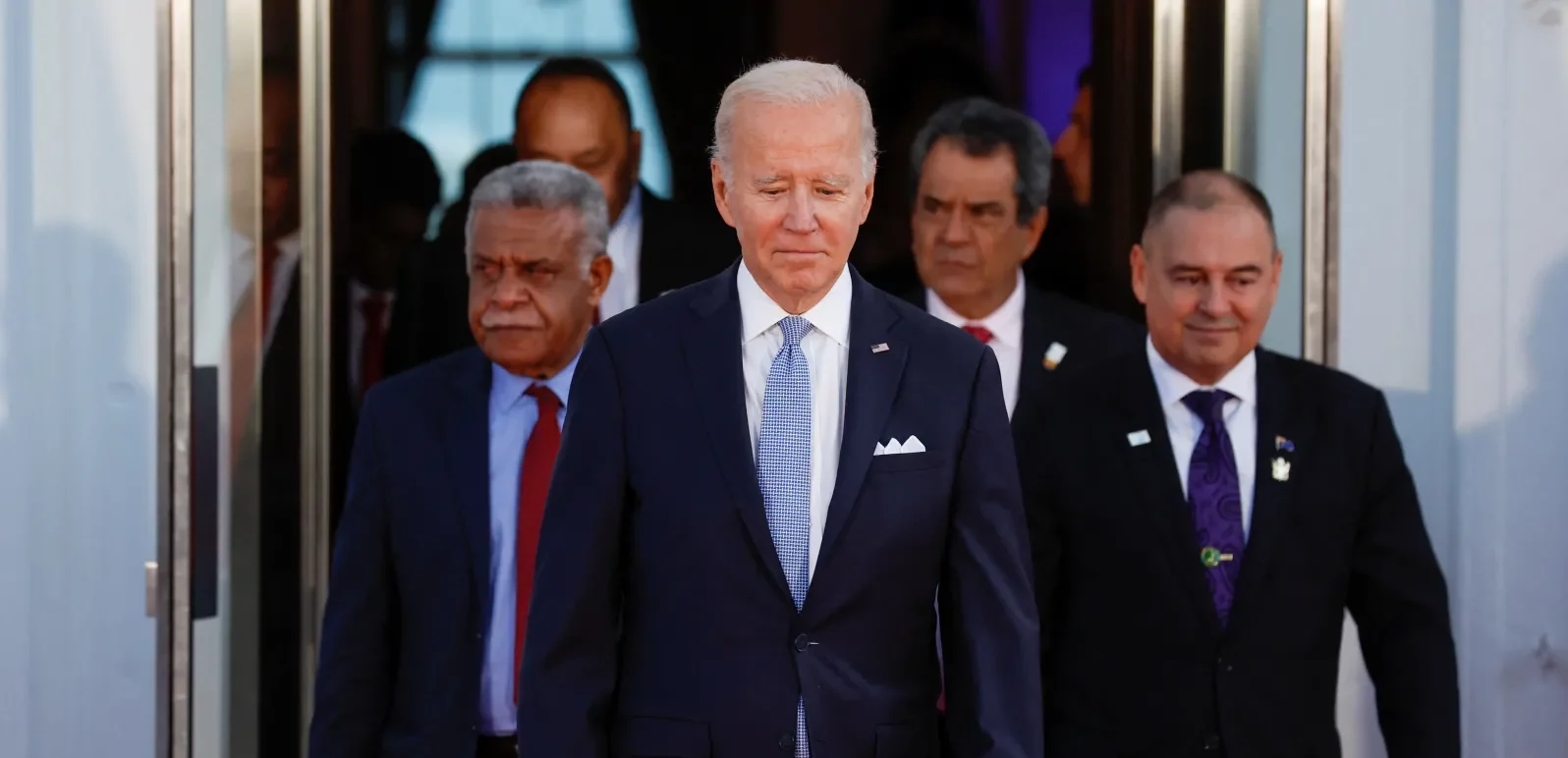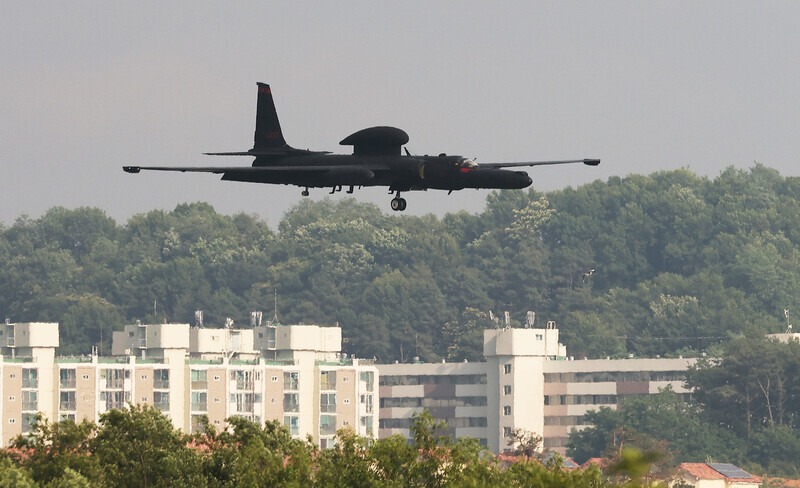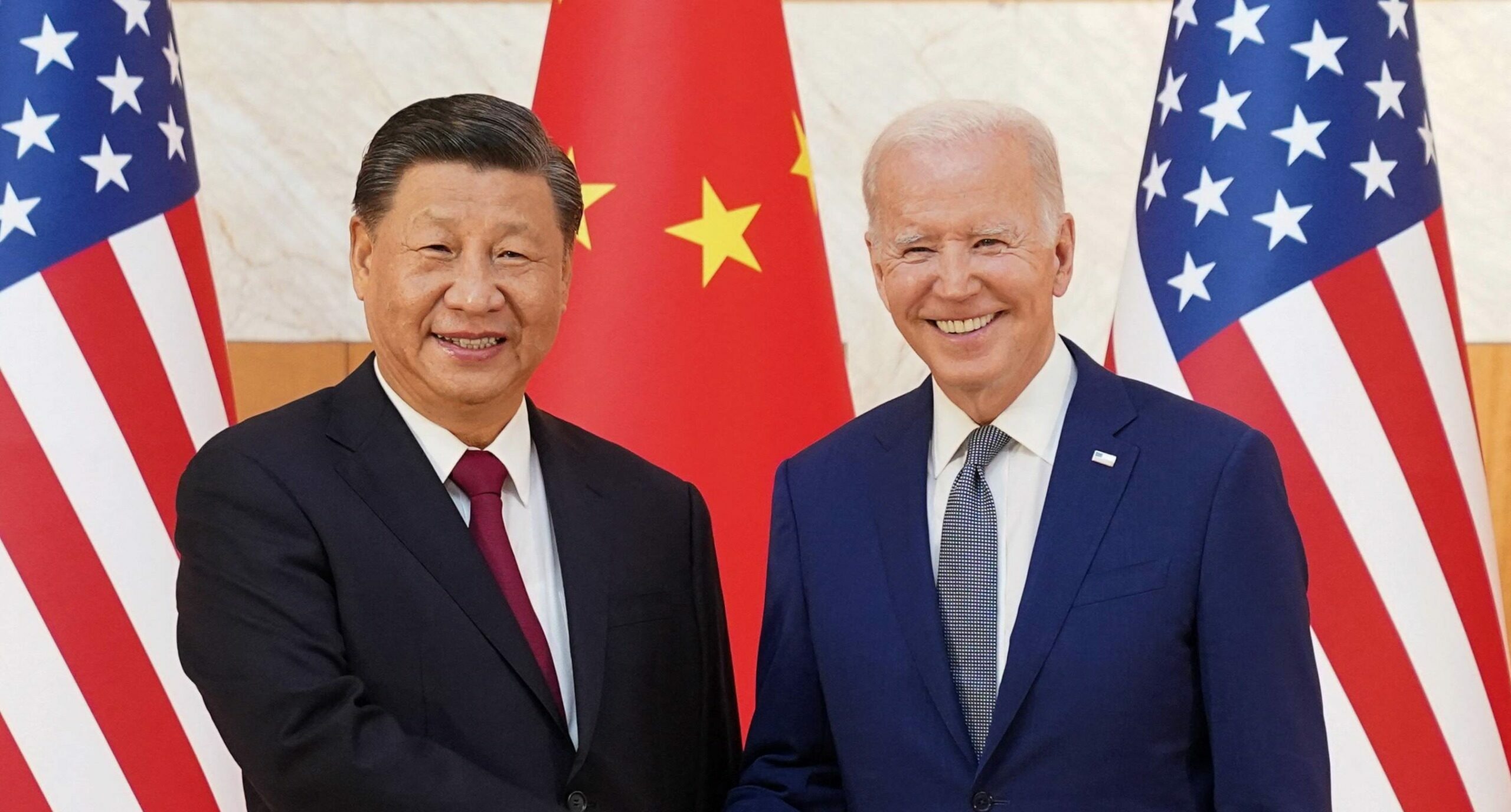The Problem With Primacy: America’s Dangerous Quest to Dominate the Pacific
FOREIGN AFFAIRS
APLN Senior Associate Fellow Van Jackson argues that the United States must respond to Asia as it exists rather than treating it as an abstract arena in which it can conduct power politics. Read the original article here.
In its policies toward Asia, the United States has long sought to reconcile its unsurpassed military, economic, and rule-setting prowess with a desire for stability. Until recently, this was not hard to accomplish. Washington’s international dominance coincided with the post-1979 “Asian peace”—a period of remarkable stability in East Asia and the Pacific—and so the United States had little trouble holding sway over the region without provoking any conflicts. Over time, Washington even came to believe that U.S. supremacy and regional tranquility could not just coexist but were causally related. As a result, U.S. policymakers made maintaining Asian primacy the foundation of their regional strategy, arguing that without Washington’s leadership, Asia would devolve into warfare.
But as the American author James Baldwin wrote in 1963, “time reveals the foundations on which any kingdom rests, and eats at those foundations, and it destroys doctrines by proving them to be untrue.” Even if U.S. primacy was once a source of regional stability, there is little basis to think it will promote harmony today. The United States’ global power has diminished over the past generation, making it harder for Washington to direct the world. Other states have a newfound desire and capacity to resist, subvert, lash out against, or seek alternatives to U.S. preferences, including through violence. And the power of these countries is likely to continue to grow. It defies history to expect that dusk will never come for U.S. hegemony, especially as China—the world’s most populous state and Washington’s primary global competitor—draws power from its central place in the international economic system.
Nevertheless, two of the most recent U.S. presidents—Barack Obama and Donald Trump—charged themselves with the task of indefinitely propping up the sun. And President Joe Biden has picked up where both presidents left off. Initially, that meant taking steps to constrain Beijing. Now, it means taking steps to weaken the country. Obama started the process by launching a high-profile “pivot to Asia” designed to bolster the United States’ regional military presence as a check against China’s rise while interweaving his country’s economy into that of eight states close to China’s borders. Trump, who saw how China’s important economic position afforded it growing global influence, launched a trade war with Beijing. His administration also deepened Washington’s ties to Taiwan. Biden has increased the U.S. military buildup, facilitated a regional military buildup, and attempted to assemble the beginnings of an anti-Chinese containment coalition along with local Asian powers.
These choices run headlong into what the preservation of peace demands. Kneecapping China’s economy, engaging in an endless arms race, aligning with local despotic regimes to encircle Beijing, and alienating smaller countries by demanding that they choose between China and the United States might give Washington more short-term power in Asia. But these are the ingredients of regional fracture and eventual war, not stability. The United States’ Asia policy, then, is at an unacknowledged crossroads. Washington can support regional peace or pursue regional primacy, but it cannot do both.
OUT OF CONTROL
The United States has been working hard to remain on top in Asia for well over a decade. In 2010, then U.S. Deputy National Security Adviser Ben Rhodes declared that the Obama administration was trying “to get America another fifty years as leader.” Under Trump, a declassified White House strategy document showed that the United States’ supreme interest in Asia was maintaining “U.S. strategic primacy” as well as Washington’s “diplomatic, economic, and military preeminence.” The “loss of U.S. preeminence in the Indo-Pacific,” the administration claimed in the document, “would weaken our ability to achieve U.S. interests globally.”
The Biden administration remains faithful to this path. In its 2021 strategy, it declared that “leading the world” was in the United States’ “undeniable self-interest.” It went on to say that the country’s interests “compel the deepest connection to the Indo-Pacific” and that the United States’ presence would be “most robust in the Indo-Pacific and Europe.” The Pentagon has promised that 2023 will be “the most transformative year in US force posture in the region in a generation,” a line likely meant to be reassuring but that comes off as ominous. The Department of Defense is making good on this promise by modernizing its large traditional presence in Northeast Asia while increasing its footprint in the Pacific Islands and Australia—areas that the Chinese military cannot seriously contest. It is also rolling out a suite of new lethal weapons such as the B-21 nuclear-capable stealth bomber. Unveiled in December with the fanfare of a new iPhone, the B-21 has an eye-watering price tag of $203 billion, which is somehow under the original budget.
For Washington, the increased emphasis on Asia has been largely driven by the fear that China’s growing strength will impinge on the United States’ ability to shape the global order. The Pentagon has described Beijing as a “near-peer competitor” and a “pacing threat.” In response, the United States has entered an arms race against a rapidly modernizing People’s Liberation Army (PLA). It is a contest with no apparent end. The U.S. defense budget went from $700 billion in 2018 to $768 billion in 2020. For 2023, it will eclipse $850 billion. Aid to Ukraine accounts for only a little over $50 billion of that total. The United States is also offering ever more advanced weapons technologies to friends and allies.
Washington’s efforts to retain its primacy in the region go beyond amassing and proliferating armaments. To achieve even greater dominance, the United States has turned the global political economy into a zero-sum struggle against Beijing. Biden has retained Trump-era student-visa restrictions targeted at the Chinese and expanded his predecessor’s tariffs, sanctions, and company blacklists. In October, for example, administration officials banned U.S.-made semiconductor technology from being sold to Washington’s self-proclaimed competitor. It is a remarkable step, given that semiconductors were largely irrelevant to global power politics until the United States christened them a major focal point of national security. By characterizing these technologies—which are found in everyday goods such as smartphones and televisions—as vital to national strength and prosperity while also declaring that its nemesis must not be allowed to have them, Washington has made its radical militarism readily apparent.
The United States’ fixation on crippling China’s access to semiconductors entails more than export bans. In its October guidelines, the Commerce Department also restricted U.S. corporations from engaging in any semiconductor-related research, development, or financing with Chinese entities. “We are ahead of [China],” explained U.S. Secretary of Commerce Gina Raimondo. “We need to stay ahead of them. And we need to deny them this technology that they need to advance their military.”
This is not the rationale of a country that is simply balancing Chinese power or trying to stop Beijing from creating a sphere of influence. It is not the strategy of a state trying to decouple from the Chinese economy. It is containment in all but name.
PRIMACY VERSUS PEACE
For the United States, there are many problems with a strategy based on trying to stop China’s rise. One is that on a basic level, it will not work. There is no reason to believe that spending over a trillion dollars modernizing the U.S. nuclear arsenal or selling submarines to Australia will cause China to do anything but continue arming itself as quickly as possible. China has spent years preparing for a techno-containment strategy from the United States, launching its “Made in China 2025” initiative in 2015 precisely to guarantee that it has a strong domestic technology industry. And the rest of Asia is not willing or able to isolate Beijing under current political conditions.
What maintaining U.S. primacy will instead do is menace the Asian peace. The massive military investments needed to ensure the United States remains the Indo-Pacific’s dominant power require outarming China in areas of its highest capability, close to Chinese shores and far from the U.S. homeland. It is an impossible task. Consider, for instance, the steps Washington must take to fight a war over Taiwan. China has the natural, massive advantage of being close to the island’s coasts, all of which fall within range of Chinese air defenses. To repel a PLA attack against Taiwan, the United States would need absurd levels of modern weaponry—meaning a blank check for the Pentagon. It would have to engage in what the sociologist C. Wright Mills once called “the idiot’s race”: amassing missiles and crafting military positions that stoke jingoism on both sides, heighten instability, and lead each state to adopt the most malign interpretations of the other’s intentions. One must squint quite hard to discern a theory of stability in a strategy that demands a favorable imbalance of military power, the active proliferation of weapons platforms, and muscle flexing in the name of signaling resolve.
Risking military escalation is only one of the ways that primacy has an antagonistic relationship to stability. As I argued in Pacific Power Paradox: American Statecraft and the Fate of the Asian Peace, any U.S. drive for economic dominance will also undermine regional stability because it involves breaking up the economic structures that have played a vital role in preventing war in the Pacific. The East Asian development model based on exports and interdependence was made possible because political leaders decided to prioritize national development over nationalist revanchism. Asian heads of state put dozens of territorial disputes, many of which still endure, on the back burner in order to create a thicket of regional institutions to encourage trade and informal, consensus-based habits of diplomacy. The result was both spectacular economic growth and remarkable stability.
In decades past, Washington’s economic primacy was rarely contested by other states, and so the actions it took to remain central to Asian trade and financial flows were subtler and less visible. In the 1980s, the Reagan administration asserted control over the region by making sure that burgeoning regional institutions remained informal and were led by the private sector. In the 1990s, the Clinton administration succeeded in opposing a Malaysian-led East Asian Economic Caucus and a Japanese-led Asian Monetary Fund—both of which would have excluded the United States. The George W. Bush administration deliberately marginalized the East Asia Summit, which did not yet include Washington. But times have changed. Today, the United States no longer has a central position in Asian political economy. Its bid to assert greater control from the periphery therefore requires a brusquer approach with a much heavier hand than in the past—including potentially wrecking the economic interdependencies that have helped keep the peace.
Washington’s drive to outcompete China gave rise to a full-court diplomatic press to convince Asian governments that they should divest of Huawei—admittedly one of the Communist Party’s tech titans but also a major, affordable global telecommunications provider across the Indo-Pacific. The recently launched quest to cut off China from advanced data-processing technologies so far involves cajoling Japan, South Korea, and Taiwan to comply with ever-tightening restrictions on trade, investment, and intellectual property. And there is no reason to expect this round of economic strangulation to be the end of the pain it seeks to inflict. Instead, it is Mills’s “idiot’s race” again, but with economic policy. If, as Washington believes, China is an aggressive power on the march, the last thing the United States should want is for Beijing to be cut off from other countries’ markets. Without such access, China would have even less of an incentive to restrain itself.
Beijing, of course, also has a revisionist desire to promote its interests. The Chinese Communist Party is hardly a force for peace. But the reality is that China is now embedded in Asia’s financial and economic system in ways that the United States is not, giving Beijing the kind of political weight in Asia that Washington lacks. In addition to being a major regional financier, China is Asia’s central hub in a manufacturing network that produces finished goods for markets across the world. It is the single largest trading partner for most economies. It has created numerous institutions that connect the region, most famously the Belt and Road Initiative. Crucially, China belongs to most of the agreements that make up Asia’s economic architecture, such as the Regional Comprehensive Economic Partnership, the Chiang Mai Initiative for intraregional currency swapping, the Asian Bond Markets Initiative, the Association of Southeast Asian Nations Plus Three (China, Japan, and South Korea), and the Trilateral Cooperation Secretariat. Washington, by contrast, belongs to none of these.
U.S. officials, then, are demanding that Asian states work against their own long-term interests. They insist that Asian governments betray the interdependence that has fostered regional peace because doing so might give Washington—not Asia—a marginal advantage in a geopolitical struggle of questionable merit. In the best of times that would be unrealistic, and this is far from the best of times. As China grows more and more embedded in Asia’s regional architecture, the United States is in a worse material and symbolic position to levy such demands than at any point since the end of the Cold War.
READING THE ROOM
So what should Washington do instead? It could start with a dose of simple pragmatism. Asian governments want stability more than anything, and they know what serves their interests in this respect better than the United States ever could. Centering statecraft on the concerns of Asian societies would require a dramatic shift in how the United States conducts itself in the region, but it would also be the surest way to consolidate—rather than further embrittle—the Asian peace.
If it tuned in, Washington would learn that small states are wary of being forced to take sides in a great-power competition. They are pleading instead for geopolitical openness and strategic pluralism in the spirit of the Non-Aligned Movement: the Cold War era collection of postcolonial states that refused to be subordinated to either the Soviet Union or the United States. The Association of Southeast Asian Nations, for instance, has repeatedly stated it will not choose between China and the United States. East Timor’s president has made it clear that just because his country seeks China’s help economically does not mean it is “taking sides.” Indonesia and some Pacific Island governments have expressed an interest in establishing suppliers’ cartels for valuable raw materials such as nickel, which would give these countries the money and modest political leverage they need for true autonomy. And as Singaporean Foreign Minister Vivian Balakrishnan declared last September, “Nobody wants to be forced to make invidious choices. Nobody wants to become a vassal state or a cat’s paw.”
Asian leaders are also wary of any measure that would cause China’s economy to implode. It is easy to see why. The region’s economies are so interconnected with China’s that if the latter tanked (whether as a result of U.S. containment efforts or Beijing’s own failures), the rest of Asia would go down with it. Regional leaders therefore want to buoy—and profit from—the local great-power economy, one that helped insulate Asia from the worst of the 2008 global financial crisis. Asian governments are not naive about the risks of dealing with China, and it is true that in states where corruption reigns, Chinese investments seem to make nepotism, kleptocracy, and structural violence worse. But regional elites are also not paranoid about China, as the United States appears to be.
It is still unclear whether Asian states can actually create a new Non-Aligned Movement. But the very fact that leaders are so committed to trying suggests that Washington’s attempts to ensure regional states fully comply with its demands to smite China are at best ill fated. At worst, U.S. efforts will actively undermine the country’s standing and destabilize the area. The semiconductor gambit, for instance, demands fracturing Asian economic integration, which will flatline the region’s growth. Washington’s maneuvers could also prompt China to engage in even more aggressive conduct abroad or further stoke nationalist sentiments at home, leading in turn to more militarism from the United States. This dangerous cycle is far from appealing to Asia, which is why most of the continent’s states would prefer working together to foster nonalignment over abetting a great-power competition.
If the United States really cares about stability in Asia, it must become a partner to any nonaligned bloc rather than an obstacle to its creation. To do so, it should increase export quotas and offer price controls for imports of commodities that are of great importance to Asian and Pacific economies. This step will aid key sources of regional economic development and bolster Asian interdependence. Washington must also help the region manage its growing levels of sovereign debt, which could cause a serious regionwide depression. It should open up international markets to governments that improve the relationship between capital and workers instead of engaging in sustained labor repression. And it should offer reparations to the many societies the United States has damaged, such as the Marshall Islands (devastated by U.S. nuclear testing), Cambodia and the Philippines (which owe the United States debts odiously incurred by previous, corrupt autocratic regimes), and Guam (a colonial possession that has not been afforded a chance at self-determination).
These steps would all signal that Washington has the interests of Asia’s people at heart, that it is not out to control others, and that it understands it cannot coerce its way to peace. But to take any of these measures, the United States must first shed its ambitions of primacy. The country must respond to Asia as it exists rather than treating it as an abstract arena in which it can conduct power politics.
Image: U.S. President Joe Biden welcoming leaders from the U.S.- Pacific Island Country Summit, Washington, D.C., September 2022, Jonathan Ernst / Reuters




